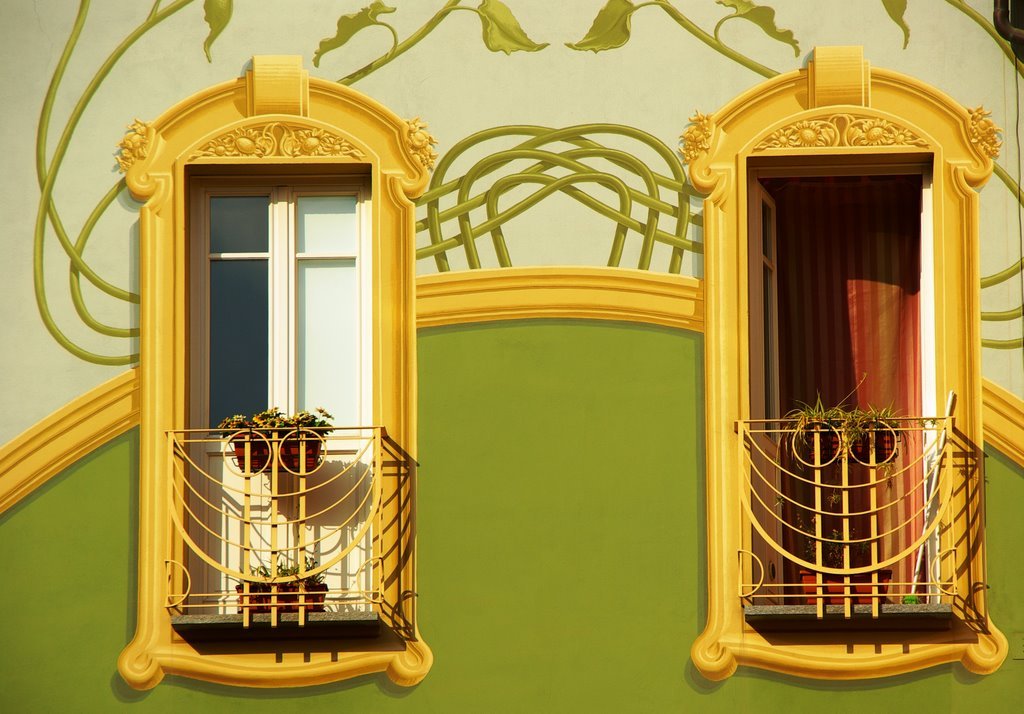#5760. Two-tone Art Nouveau façade with golden window frames
This is an expressive example of an Art Nouveau façade, demonstrating the characteristic features of this architectural style from the turn of the 19th-20th centuries. The façade is painted in a two-tone color scheme — the lower part is executed in a rich green color, while the upper part is in a light cream shade with decorative floral motifs.
Two elegant windows are framed by lavish golden casings with meticulously detailed relief plant ornaments in the upper section. The windows have a T-shaped form and are complemented by small French balconies with wrought iron railings featuring curved lines that create a rhythmic wave-like pattern. A red curtain is visible through the glass on the right balcony, adding a color accent to the composition.
The wall between the windows is decorated with intertwining lines resembling plant stems — a typical Art Nouveau motif. The organic, flowing lines on the façade create a sense of movement and life. The contrast between the geometric lower part of the façade and the free-flowing, fluid upper part with plant elements adds particular expressiveness.
This architectural example demonstrates the core principles of Art Nouveau: rejection of straight lines in favor of the "whiplash line," inspiration from natural forms, use of asymmetry, and decorative elements as an integral part of the building's structure.
